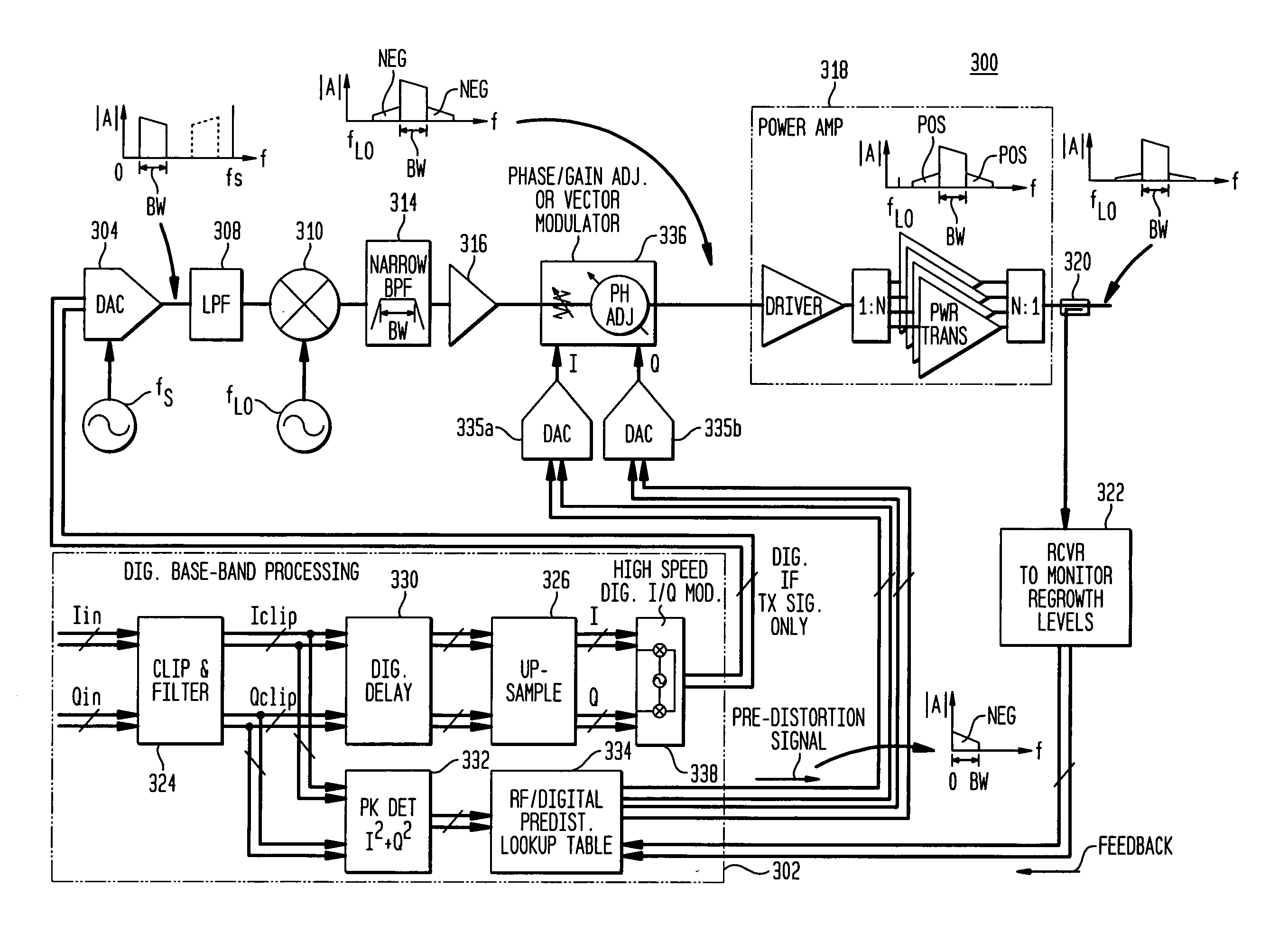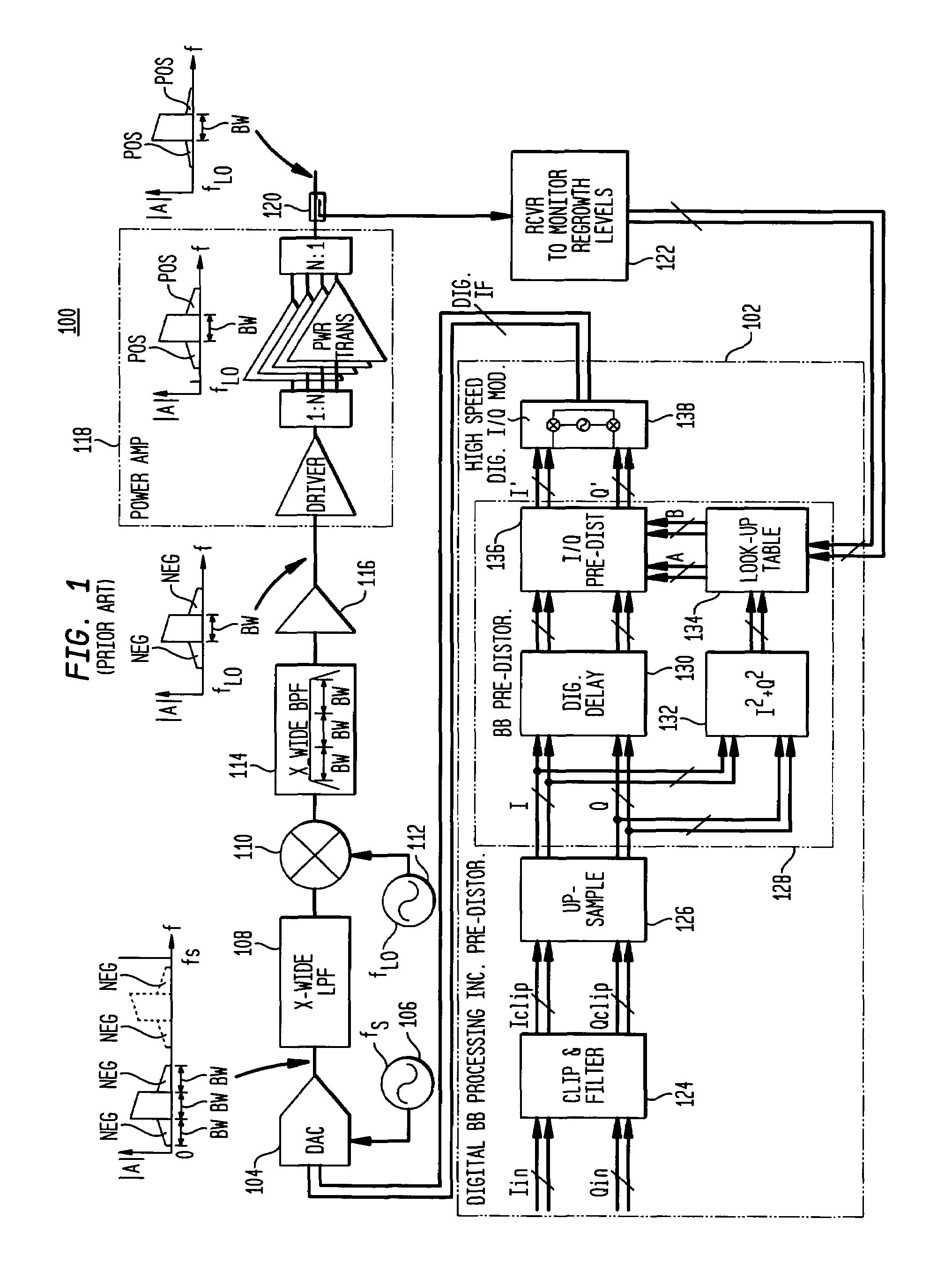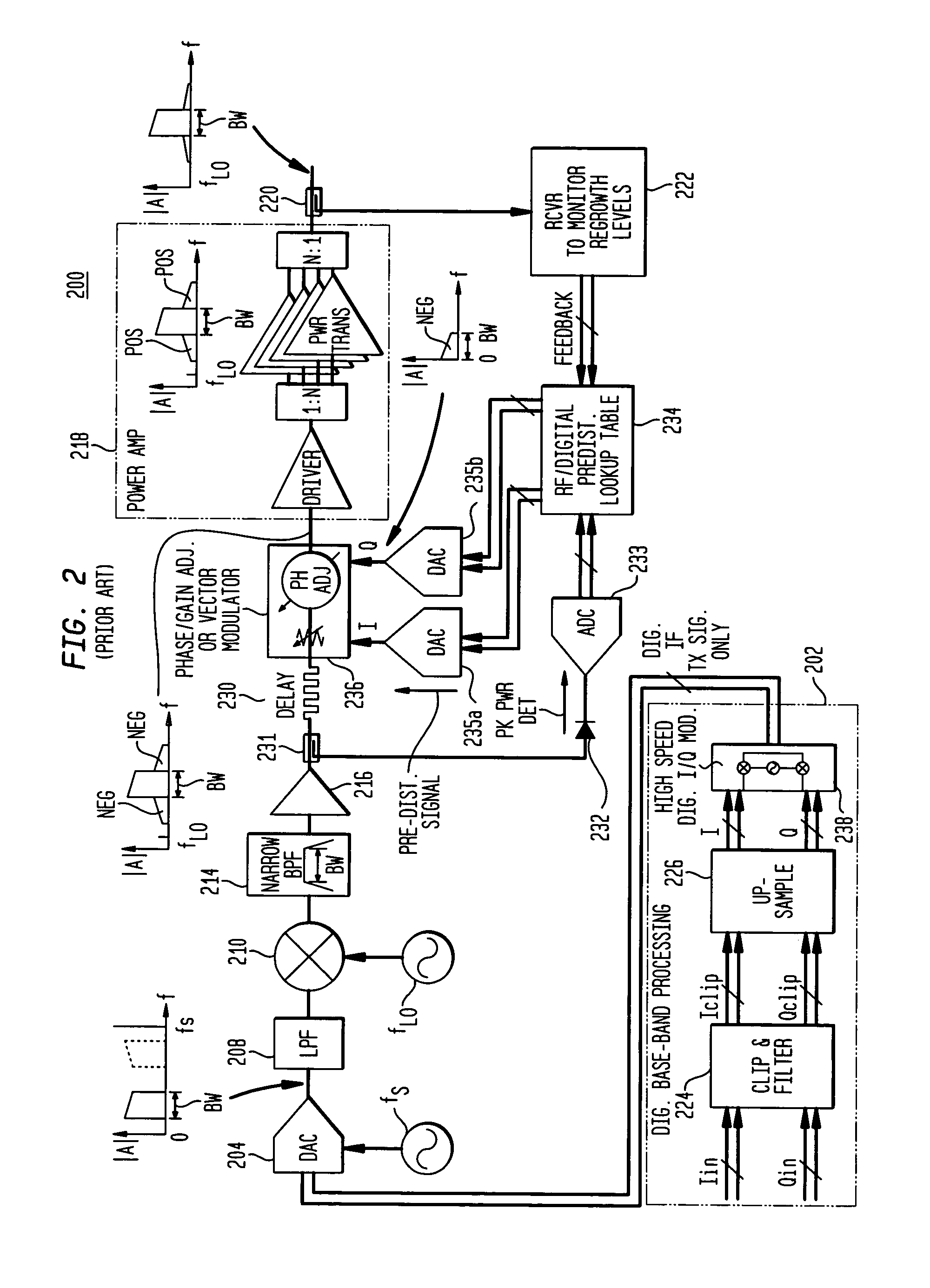Linearization of amplifiers using baseband detection and non-baseband pre-distortion
a technology of pre-distortion and linearization, applied in the field of signal processing, can solve the problems of increasing the cost, affecting the operation of the amplifier, and displaying non-linearity over the operating range of the amplifier, so as to improve the reliability and reliability of the amplifier. the effect of reducing the cos
- Summary
- Abstract
- Description
- Claims
- Application Information
AI Technical Summary
Problems solved by technology
Method used
Image
Examples
Embodiment Construction
[0022]FIG. 3 shows a block diagram of a linearized amplifier system 300 according to one embodiment of the present invention. Unlike prior-art amplifier system 100, which performs its pre-distortion processing at baseband in the digital domain, and prior-art amplifier system 200, which performs its pre-distortion processing at RF, amplifier system 300 performs some of its pre-distortion processing at baseband in the digital domain and some of its pre-distortion processing at RF. In particular, digital baseband processor 302 functions as a digital baseband pre-distortion detector, which detects the signal envelope and retrieves the digital pre-distortion parameters A and B from a LUT at baseband, while the actual signal pre-distortion is performed by pre-distorter 336 (e.g., a phase / gain adjuster or a vector modulator) at RF in the analog domain.
[0023]In particular, processor 302 comprises clip & filter block 324, upsampler 326, and high-speed digital I / Q modulator 338, which are ana...
PUM
 Login to View More
Login to View More Abstract
Description
Claims
Application Information
 Login to View More
Login to View More - Generate Ideas
- Intellectual Property
- Life Sciences
- Materials
- Tech Scout
- Unparalleled Data Quality
- Higher Quality Content
- 60% Fewer Hallucinations
Browse by: Latest US Patents, China's latest patents, Technical Efficacy Thesaurus, Application Domain, Technology Topic, Popular Technical Reports.
© 2025 PatSnap. All rights reserved.Legal|Privacy policy|Modern Slavery Act Transparency Statement|Sitemap|About US| Contact US: help@patsnap.com



